The Visible Voices
The Visible Voices podcast amplifies voices that are Visible and those that may be Invisible. We speak on topics related to healthcare, equity, and current trends. Based in Philadelphia, and hosted by physician Resa E. Lewiss, we really like speaking with people like you.
Episodes
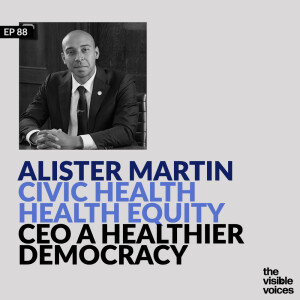
Thursday Dec 01, 2022
Thursday Dec 01, 2022
Alister Martin MD MPP is the CEO of a healthier democracy. He works at the intersection of public policy and medicine as research faculty at the Harvard Kennedy School Behavioral Insights Group and clinical faculty at HMS in the Center for Social Justice and Health EquityPrograms like Link Health, Vot-ER, Get Waivered and others are just a few key concrete examples of how healthcare settings and providers can be leveraged to help create A Healthier Democracy!
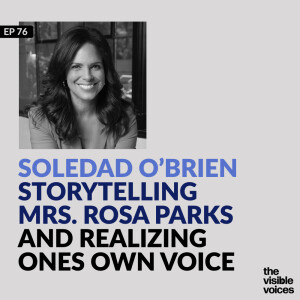
Thursday Nov 24, 2022
Thursday Nov 24, 2022
Soledad O’Brien is a journalist, documentarian, podcaster, working mom, dog mom, news anchor, and producer. She champions the stories of marginalized communities, and is the recipient of numerous awards, including three Emmy awards, the George Foster Peabody Award, and the Alfred I. DuPont Award.
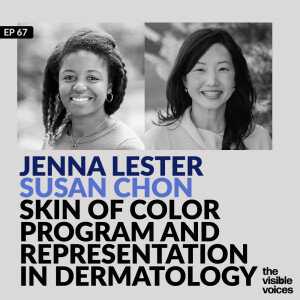
Thursday Nov 17, 2022
Thursday Nov 17, 2022
We Need More Illustrations of People of Color in Medical Textbooks— The lack of diversity perpetuates health inequality and stereotypes"The consequences of primarily depicting White, lighter skinned individuals with Eurocentric features in medical images supports the persuasive concept of White supremacy. It perpetuates the belief that the White male body is "the standard" to which all other bodies should be compared. It leads to inequality in medical education and further perpetuates harmful stereotypes of Black individuals. As a result, this issue plays a role in inappropriate diagnosis and health management of Black individuals. Furthermore, medical care becomes subjective, discriminatory, and filled with speculatory assumptions based on stereotypes."Jenna C. Lester is founder of the Skin of Color dermatology program at UCSF, which addresses the persistent issues that arise from the exclusion and marginalization of non-white patients in medical research and practice. She is combatting medical disparities due to racial inequality, working to fill education gaps in textbooks and curriculum about non-white skin and training a new generation of doctors. A graduate of Harvard University and The Warren Alpert Medical School of Brown University, she is an assistant professor of dermatology at UCSF where she practices and teaches general dermatology.Jenna's TedX TalkSusan Y. Chon, a 1991 Brown graduate with an independent concentration in children’s literature, is a professor in the Department of Dermatology at the University of Texas M.D. Anderson Cancer Center. Prior to joining the faculty, she earned her M.D. from Stanford University School of Medicine. She then completed her internship in internal medicine and her dermatology residency at Stanford University Hospital. Chon specializes in treating patients with skin cancers, melanomas and skin disorders from cancer treatments. She is a medical educator and an active mentor for medical students and dermatology residents. She is also director of the Skin Cancer Screening and Prevention Program and founded the volunteer physician program for the Brookwood Community, a residential and vocational program for adults with disabilities. Chon is the president of the Brown Club of Houston, helping to maintain the connection between Brown and its graduates throughout the world, and serves as a member of the Women’s Leadership Council, Women’s Launch Pad and Philanthropy Advisory Group.
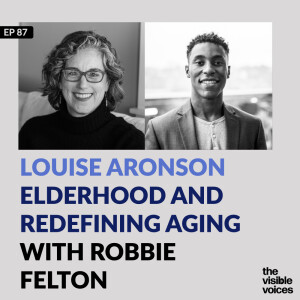
Thursday Nov 10, 2022
Thursday Nov 10, 2022
Louise Aronson, MD MFA, is a leading geriatrician, writer, educator, professor of medicine at UCSF and the author of the New York Times bestseller and Pulitzer Prize finalist Elderhood: Redefining Aging, Transforming Medicine, and Reimagining Life. A graduate of Harvard Medical School, Louise has received the Gold Professorship in Humanism in Medicine, the California Homecare Physician of the Year award, and the American Geriatrics Society Clinician-Teacher of the Year award. Her current work is focused on expanding geriatric care and public perceptions of old age to more accurately attend to the decades and diversity of elderhood, developing innovative programs and practices to empower older adults to retain agency and maximize wellness as they age. At UCSF, Louise has served as director of the Pathways to Discovery program, the Northern California Geriatrics Education Center, the Optimizing Aging Project, and as Chief of Geriatrics Education. Her writing credits include the New York Times, Atlantic, Washington Post, Discover, Vox, JAMA, Lancet, and the New England Journal of Medicine, and she has been featured on TODAY, CBS This Morning, NPR’s Fresh Air, Morning Edition, Politico, Kaiser Health News, Tech Nation and the New Yorker. Robbie Felton is the Co-founder and CEO of Intus Care. Intus Care provides data and services to help integrated care programs improve outcomes for their patients in Medicare managed care. The company serves 25 health plans and care programs nationwide with tens of thousands of patients. Prior to Intus Care, he studied Public Health at Brown UniversityProgram of All-Inclusive Care for the Elderly (PACE) is a type of home and community based service HCBS that provides medical services and supports everyday living needs for certain elderly individuals, most of whom are eligible for benefits under both Medicare and Medicaid. These services are provided by an interdisciplinary team of professionals. For example, a primary care physician, nurse, social worker, physical therapist, and dietitian are a few of the necessary members.
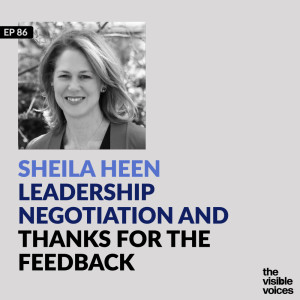
Thursday Nov 03, 2022
Thursday Nov 03, 2022
Sheila Heen has been with the Harvard Negotiation Project for twenty years, teaching negotiation and difficult conversations at Harvard Law School and in Harvard's executive education programs.She is also CEO of Triad Consulting in Harvard Square, where she specializes in working with executive teams on issues where there is strong disagreement and emotions run high. She has worked with corporate clients on six continents, with the US White House, the Singapore Supreme Court, and with theologians with disagreements on the nature of truth and God.With co-author Douglas Stone, Heen has published two best selling books Difficult Conversations and Thanks for the Feedback
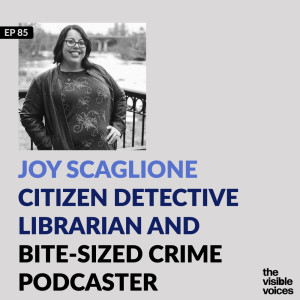
Thursday Oct 27, 2022
Thursday Oct 27, 2022
Joy Scaglione is the host of Bite-Sized Crime, a short-form podcast that focuses on lesser-known stories in the true crime world. Fact-based and extensively researched, Bite-Sized Crime is committed to giving voices to victims who may not otherwise have a chance to be heard. Outside of podcasting, Joy is a nationally certified school librarian with twenty years of experience in public and private education. In her free time, she enjoys traveling, playing with her 3 big dogs, and catching up on the latest Netflix documentaries. The podcast is part of the Boundless audio network
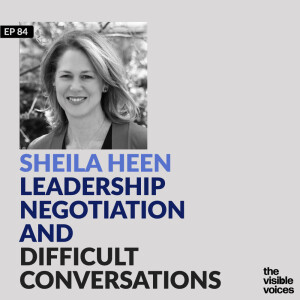
Thursday Oct 20, 2022
Thursday Oct 20, 2022
Sheila Heen has been with the Harvard Negotiation Project for twenty years, teaching negotiation and difficult conversations at Harvard Law School and in Harvard's executive education programs.She is also CEO of Triad Consulting in Harvard Square, where she specializes in working with executive teams on issues where there is strong disagreement and emotions run high. She has worked with corporate clients on six continents, with the US White House, the Singapore Supreme Court, and with theologians with disagreements on the nature of truth and God.With co-author Douglas Stone, Heen has published two best selling books Difficult Conversations and Thanks for the Feedback

Friday Oct 14, 2022
Friday Oct 14, 2022
Kevin M. Simon, MD, was appointed as the first Chief Behavioral Health Officer for the City of Boston. Dr. Simon will guide a public health strategy to support Bostonians’ growing mental and behavioral health needs at the Boston Public Health Commission. In addition, he is an Attending Psychiatrist at Boston Children's Hospital, an Instructor in Psychiatry at Harvard Medical School, a Commonwealth Fund Fellow at Harvard University, and a Medical Director of Wayside Youth and Family Support Network. Dr. Simon practices as a Child, Adolescent, and Adult Psychiatrist & Addiction Medicine specialist caring for youth through the Adolescent Substance use & Addiction Program (ASAP) at Boston Children's Hospital. As a physician-scientist, Dr. Simon has received federal funding for work focused on the intersections of mental health, substance use, and juvenile justice. Dr. Simon has helped design and transform behavioral health agencies as a healthcare consultant and administrative leader. He completed clinical fellowships in child & adolescent psychiatry and addiction medicine at Boston Children's Hospital/Harvard Medical School and a residency in adult psychiatry at Grady Hospital, affiliated with Morehouse School of Medicine, in Atlanta, GA. He received his medical degree from Southern Illinois University School of Medicine. His writings on health equity, mental health, and substance use are in notable journals, including the New England Journal of Medicine, American Journal of Public Health, and Health Affairs.NEJM: Daughters’ Keeper — The Care and Treatment of Black Girls in AmericaNEJM Them and Me — The Care and Treatment of Black Boys in America
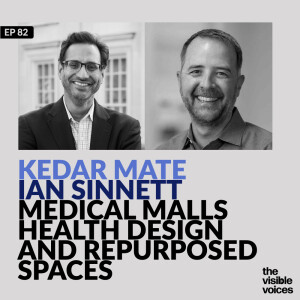
Friday Oct 07, 2022
Friday Oct 07, 2022
In 2010 Ellen Dunham Jones gave a TedTalk on retrofitting the suburbs and repurposing malls. In 2021, Kedar Mate et al authored a piece in Harvard Business Review Why Health Care Systems Should Invest in Medical MallsKedar Mate, MD, is the President and Chief Executive Officer at the Institute for Healthcare Improvement (IHI), President of the Lucian Leape Institute, and a member of the faculty at Weill Cornell Medical College. Dr. Mate’s scholarly work has focused on health system design, health care quality, strategies for achieving large-scale change, and approaches to improving value. Previously Dr. Mate worked at Partners In Health, the World Health Organization, Brigham and Women’s Hospital, and served as IHI’s Chief Innovation and Education Officer. Dr. Mate has published numerous peer-reviewed articles, book chapters and white papers and has received multiple honors including serving as a Soros Fellow, Fulbright Specialist, Zetema Panelist, and an Aspen Institute Health Innovators Fellow. He graduated from Brown University with a degree in American History and from Harvard Medical School with a medical degree. You can follow him on twitter at @KedarMateIan Sinnett, AIA, ACHA, is a Principal and board-certified healthcare architect who co-leads the Dallas Health Practice for Perkins&Will. His expertise is concentrated on the strategic, pre-design, programming, and planning phases of projects furthered by a continued level of intensity and project engagement through completion and first-patient. Ian has worked with a range of for-profit, developer, rural, academic, and not-for-profit clients including MD Anderson Cancer Center, HCA, UT Southwestern, Children’s Health, Penn Medicine, Legacy Community Health, and RedBird Dallas. Notable recent projects include critical access hospitals in Uvalde, TX and Pecos, TX, a complete reconfiguration and expansion of the Lancaster General Health ED (15th busiest in the US), and acting as the Principal in Charge of the RedBird Mall Sears Dark Store revitalization with UT Southwestern and Children’s Health in Southern Dallas. Outside of his professional life, Ian travels the world with his wife, is a volunteer and advocate for Big Brothers Big Sisters, and is building his dream get-a-away in the high deserts of West Texas.
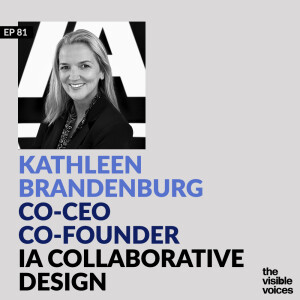
Friday Sep 30, 2022
Friday Sep 30, 2022
Selected by Fast Company as a Master of Design and one of 50 Most Influential Designers, Kathleen Brandenburg is an internationally recognized founder, thought leader, educator and speaker. Named a “Creative Maverick,” Kathleen has devoted her career to elevating design as a strategic value for business, organizations, and society. An early pioneer and advocate of human-centered design, she was one of the first to link design, business strategy, and innovation when she co-founded IA Collaborative, the global design and innovation consultancy, in 2000.Today, Kathleen is leading the conversation to elevate design’s impact even further, championing it as the way solve our world’s most urgent problems. A Harvard Visiting Professor of Design for Social Innovation, she is at the forefront of a movement to change the way healthcare understands and applies design, and is the author of Design for Health: The Beginning of a New Dialogue Between Design and Public Health.Kathleen leads work at the forefront of design and business strategy at IA Collaborative. An expert in cross-pollination, she draws from the varied industries IA serves to uncover unexpected connections and opportunities for innovation. She co-developed the company’s 7 Elements of Design Innovation™ process that has driven record success for the world’s largest brands.Kathleen serves on the Innovation Council at Northwestern University and is on the Board of Directors at IIT Institute of Design.







